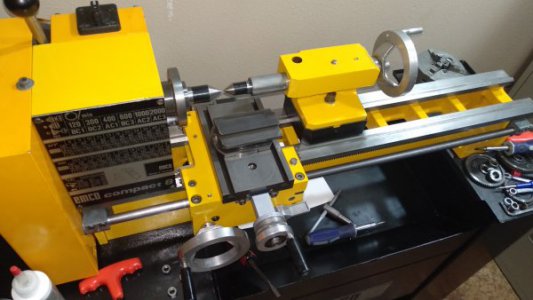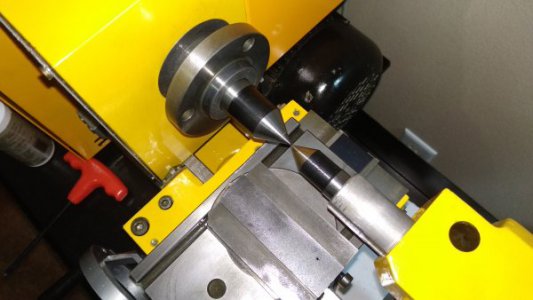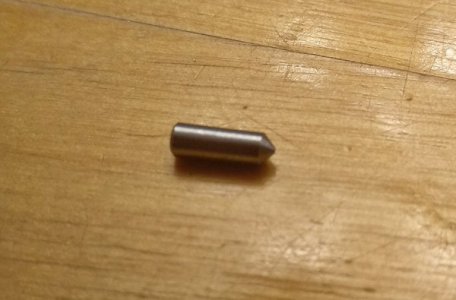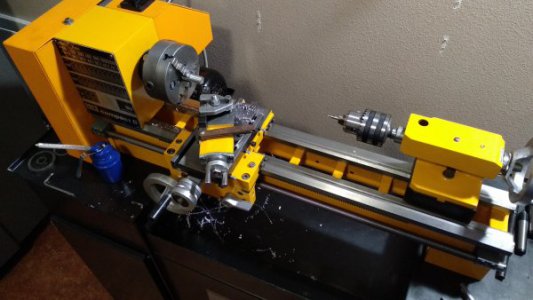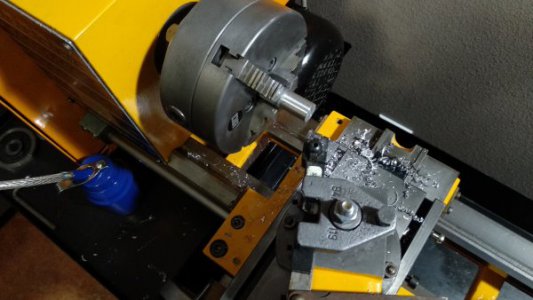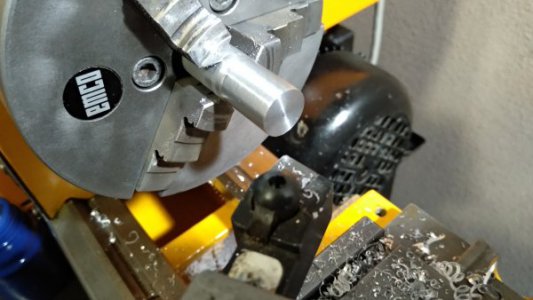I know Rohm built the chucks for the larger Emco lathes and I also suspect they built them for the Compact 8, too, so it should be more accurate than the average bear. But its not just the chuck. The design and build of the lathe is supposed to meet a DIN8606 tool room spec. At first, I thought this was just marketing hype to justify the relatively high cost of this lathe but it really is built quite well and is very accurate, at least in my experience. I spoke to one of the engineers at Emco USA about this lathe when I was restoring my friend's lathe and he seemed to be rather fond of the Compact 8, saying it was one of the best little lathes Emco built and that it is certainly one of the most copied/cloned lathe designs ever.
Your yellow Compact 8 was built by Emco in Austria, unlike the later models that were actually made by Profi Heim until they went out of business in 2001. All Compact 8's that are in current production are built in China, although they are badged as the Compact 8E.

